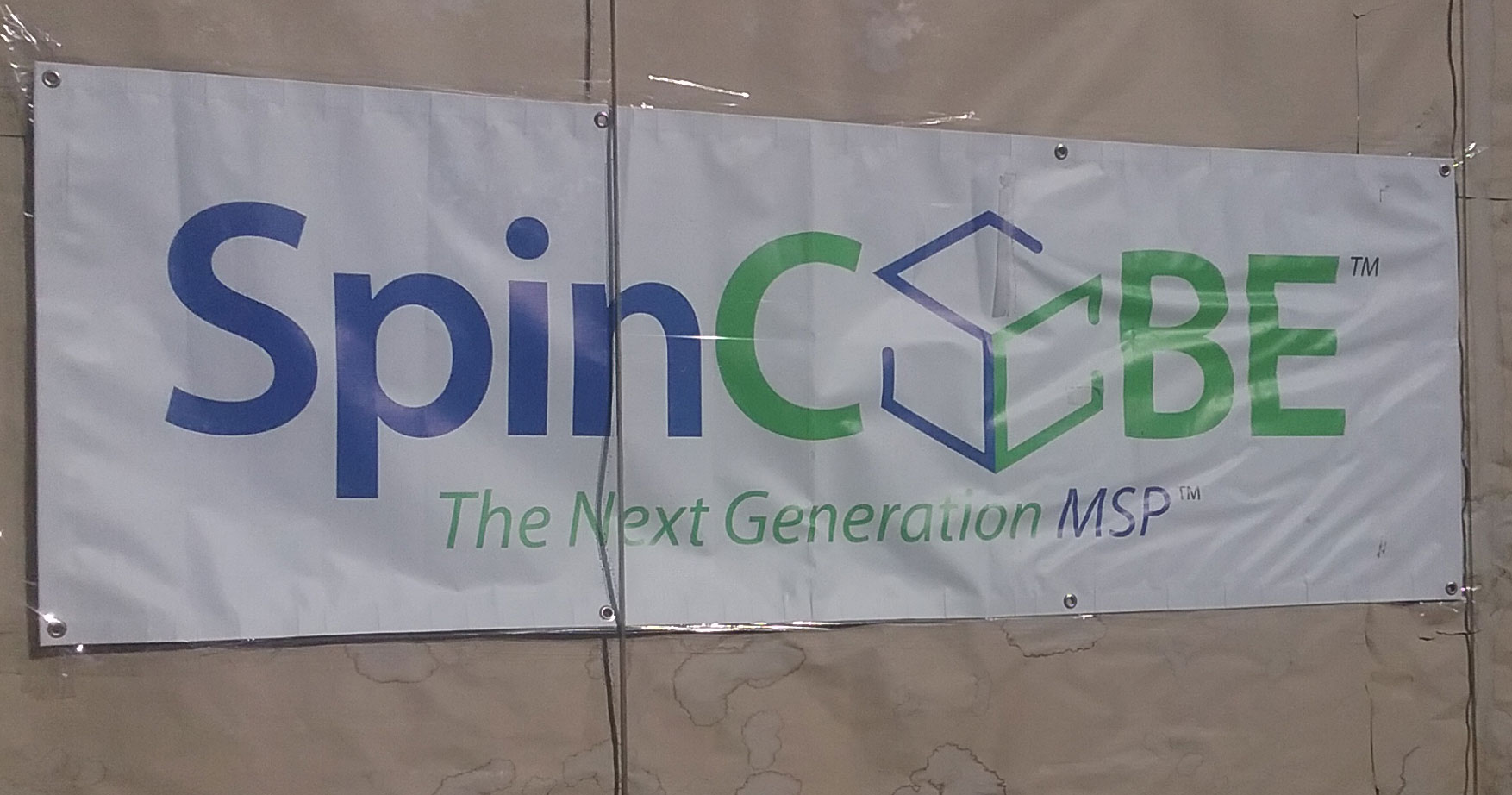This sign, taped to a brown-paper-covered window on the main commercial street in my neighborhood, presumably advertises a new business. (“Coming soon” would have helped.)
Isn’t it nice to know that the “next generation MSP” is moving in? Well, it might be if I knew what an MSP is.
SpinCUBE’s website says it’s a “managed service provider.” Okayyyy.
What’s that?
A clearer tagline is supplied with the company logo on the website: “IT Just Got Simple.” As long as you notice that it says “IT,” information technology, and not “it,” the pronoun, you at least have a clue.
The moral of the story is, don’t use abbreviations—at least, not much.
In general, abbreviations don’t communicate. They may be handy, but only if the audience can “catch” them as easily as the writer can “throw” them.
The rule is to spell out every abbreviation on first use. The exception is acronyms that have become dictionary words, like IQ and HIV/AIDS. The sign’s use of MSP breaks that rule. The alternative tagline’s use of IT falls under the exception.
But the rule addresses only what you must do if you are going to abbreviate. It doesn’t tell you whether you should abbreviate. If your goal is clear, effective communication, often you should not.
Here’s a short list of phrases you should think twice about abbreviating.
1. Your organization or program name
If you’ve got a great name, use it! Among my clients, I suggest that Enchantment Theatre Company call itself Enchantment for short rather than ETC. The National Institute on Out-of-School Time, by contrast, should continue to use its well-established acronym NIOST (pronounced NYE-awst).
2. Key terms
If your article is about “relational-cultural theory,” say that, not “RCT.” Similarly, don’t dilute the power of “child labor and forced labor” by abbreviating “CL/FL.”
3. Phrases used only occasionally
If you have “Friends of African Village Libraries (FAVL)” on page 3 and “FAVL” on pages 5, 17, and 21, you’ll lose people. Just spell it out all four times.
4. Phrases in headings
Readers often skim headings without reading the text.
If you need to save space, whether on a sign or a grant proposal, cut clutter instead of abbreviating. The less you make your audience work, the more they will understand and remember.
If you need help, I’m here for you!
If you’ve enjoyed this “signs” series, please add a comment below. Share your own favorite sign bloopers or acronym disasters. Suggest a “sign” song. Just say howdy.



I like the signs series, and would vote to continue it!
How do abbreviations work if you are trying to target a specific audience? I don’t know the particular company in your sign, but MSPs (so much quicker to type just three letters) usually sell their services to IT professionals (all caps to signify the abbreviation) who would be in the small minority of people who know what MSP means. Is there some value in signaling technical competence or even just relevance to a highly segmented audience, particularly if getting general audience walk in traffic from Kennedy Blvd would just be a distraction? (Ah! I abbreviated again on Boulevard!)
Good point, Kevin–that abbreviations DO work, and work well, for select audiences. If you know your audience is IT professionals, then by all means abbreviate MSP. But a sign on a storefront–Central Ave, by the way, rather than Kennedy (see what I did there?)–reaches a much broader audience than IT professionals. If SpinCUBE is indeed opening a storefront (which seems like an odd idea, doesn’t it?), I think the chances that the abbreviation will chase away the uninitiated are slim. Without something that screams IT, this business is going to get walk-ins who want to buy fidget spinners. (Google “spincube” and see what comes up first.)
Thank you for posting, and congratulations on making it here despite the faulty link!